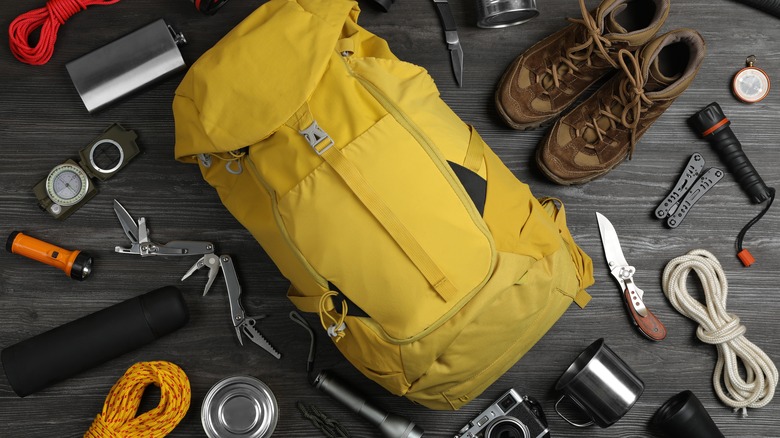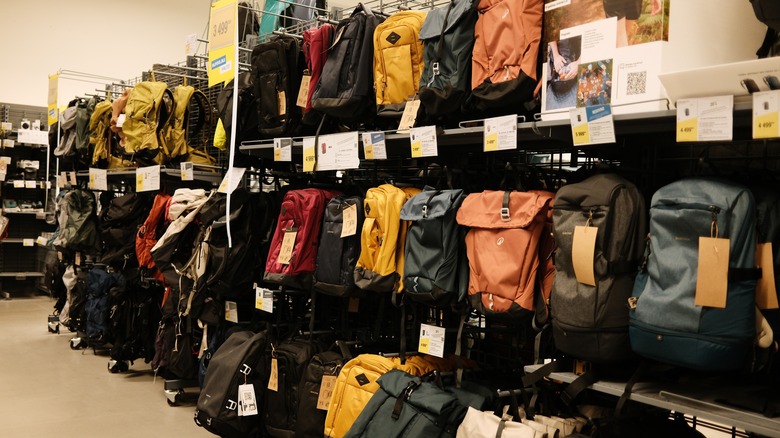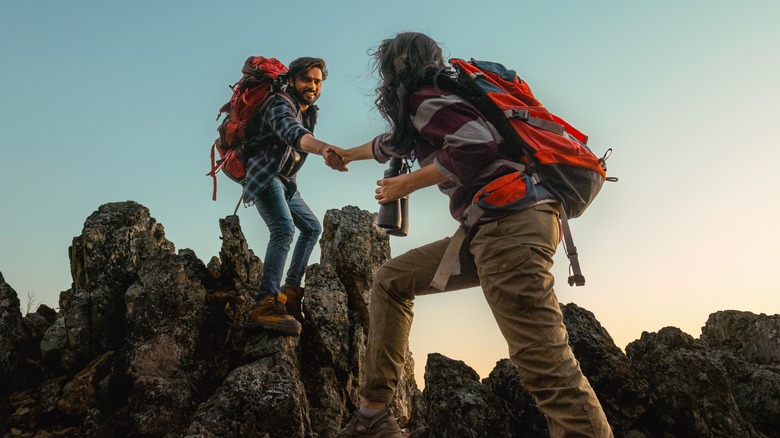Choose The Right Version Of This Essential Gear For Your Camping And Hiking Excursions
The moment you hit the trail, your backpack becomes everything. It stores your food, water, shelter, and spare clothing. Your backpack is where you keep your flashlight, cooking instruments, and first aid kit. Aside from the clothes you wear and items in your pockets, your backpack contains your whole hierarchy of needs. It's a toolbox, a pantry, and a bedroom, all packed snugly together. Skilled outdoorspeople are accustomed to carrying their whole lives on their backs, and they can subsist for days or months with a single piece of luggage.
Yet picking a backpack requires careful consideration, especially for more ambitious hikers. If you're planning a multi-day trek, you'll need a backpack that's comfortable, sufficiently large, and suited to the climate. The concept of a backpack — or its predecessor, the "knapsack" — dates back to the 1870s, when Henry Merriam patented the steel frame. These reinforced, shoulder-mounted bags have evolved considerably in the decades since, as manufacturers have tinkered with new materials and innovations. Zippers debuted in 1917, and synthetic fibers became popular in the 1960s. Modern ventilation frames hit the market in the 1980s, and CamelBak bladders, which are now commonly stuffed into special compartments, didn't gain traction until the 1990s.
Today, there are more brands and genres of backpack than ever, each tailored for different types of outing. The same way Rick Steves offers tips for picking the best bag for your travels, you should put some thought into the right backpack for hiking and camping. The right choice may help you scale mountains; the wrong choice will prove a heavy burden.
Considerations when buying a hiking backpack
Let's assume you're hiking. There are plenty of backpacks designed for school and airports, but these aren't meant for the elements; you'll need something durable. Next, how long do you plan to be outside? If this is just a day hike, you'll likely want something smaller; a 45-liter backpack should do the trick. You won't need a sleeping bag or spare clothes on this little outing, but you should have room for fresh water, sufficient food, and emergency gear. If you have special plans, you'll want to leave space for a hammock, a camera tripod, a packraft, or any number of other accoutrements. Ask your local outfitter about "day packs," and you'll likely find a good selection.
For multi-day trips, you'll almost certainly require more gear, so you'll need a backpack that is 50 to 80 liters large. Preparing for a longer expedition is an art; here is our ultimate guide to packing the best (and safest) hiking gear. But there's also a lot of room for customization, based on where you go and what you expect to do. Will it pour? You'll want a rain cover, which often tucks inside a special enclosure and can get stretched over your backpack at a moment's notice. Are you skiing to your campsite through snowy backcountry? Seek out water-resistant material, so you can set it on the ice. Do you expect technical terrain? You'll need fasteners for ropes, helmets, and ice axes. Scorching sun? Remember that black fabric absorbs heat.
Multiple backpacks for different trips
Another make-or-break factor is weight; you can certainly carry a multi-day backpack on a day trip, but the more items you carry, the heavier your load will get. Seasoned backpackers often obsess over packing techniques, shedding every unnecessary ounce. The general rule is that hikers shouldn't bear more than 20% of their body weight; so if you weigh 150 pounds, carry up to 30 pounds of equipment, and so on. This can feel daunting to first-timers, who may keep thinking of things to bring, but lightening your load can be a fun exercise in problem solving. Your goal is to avoid putting any pressure on the tops of your shoulders; about 80% of that weight should rest around your hips, while the remaining weight should press against the front of your shoulders.
If you visit a quality outdoors store like Cabela's or REI, a clerk should help you get fitted, just the way you'd try on an outfit at a clothier. You'll be spending many active hours with your backpack, and your connection will be about as intimate as it gets; you'll want something that matches your body and movement. Interestingly, backpack fitting has less to do with your overall height than the length of your torso. You'll want to walk around with the backpack, fiddle with the straps, fasten the waist belt around your hips, and even climb some stairs, if possible. Management won't let you fill the backpack with belongings, of course, so keep a record of your purchase in case you need to return it. If you're pinching pennies, here's our list of best hiking gear on a budget.


